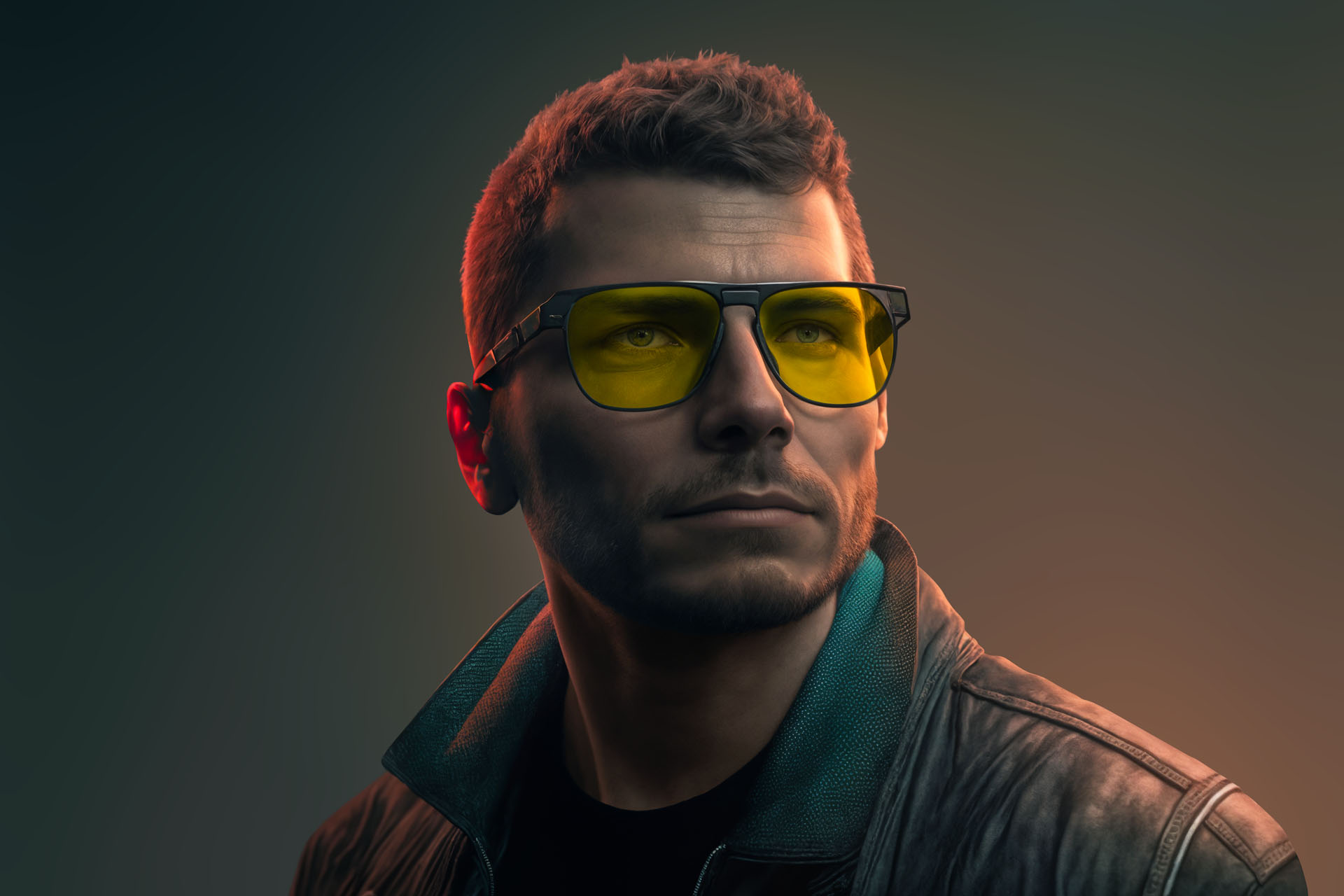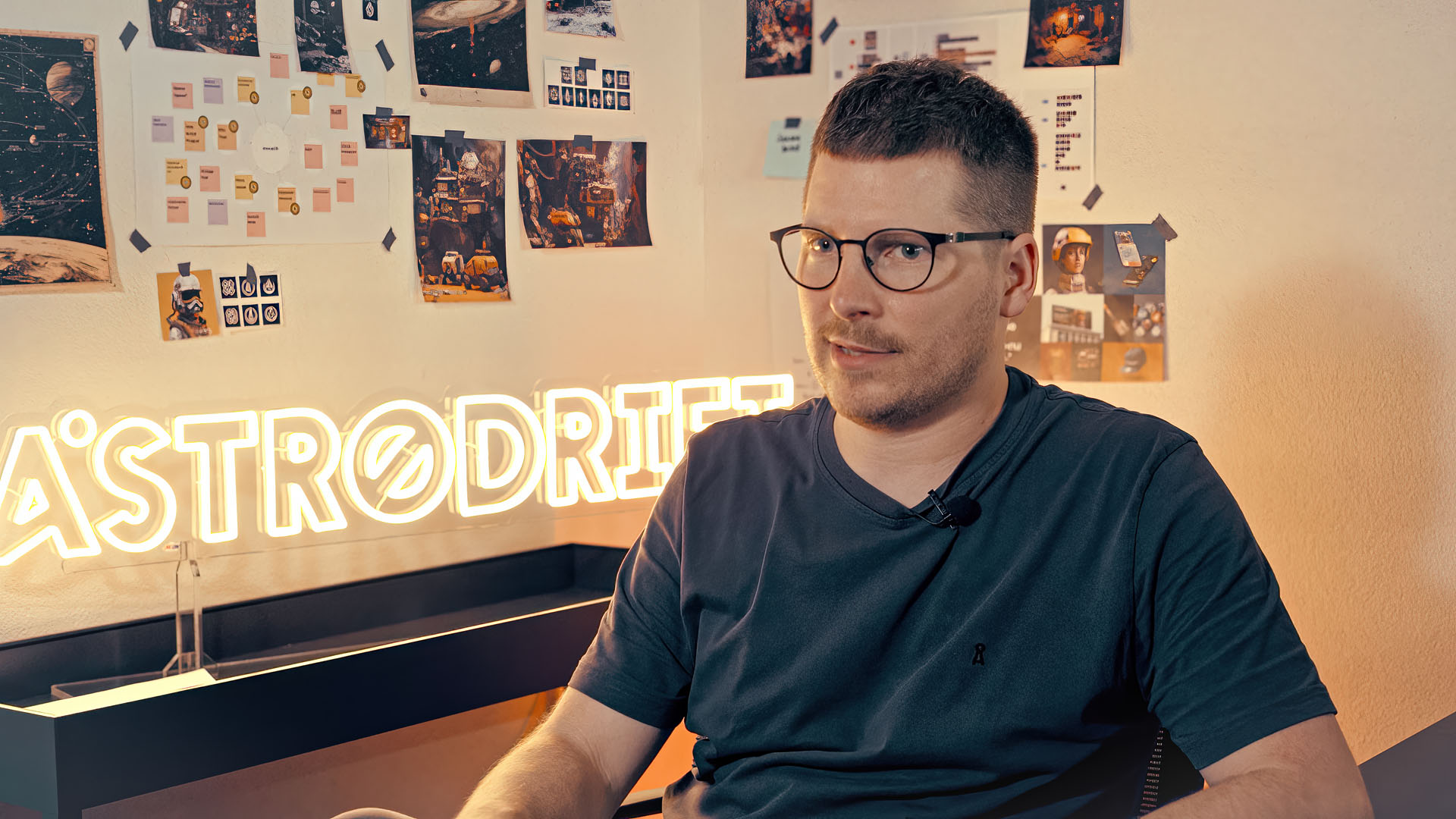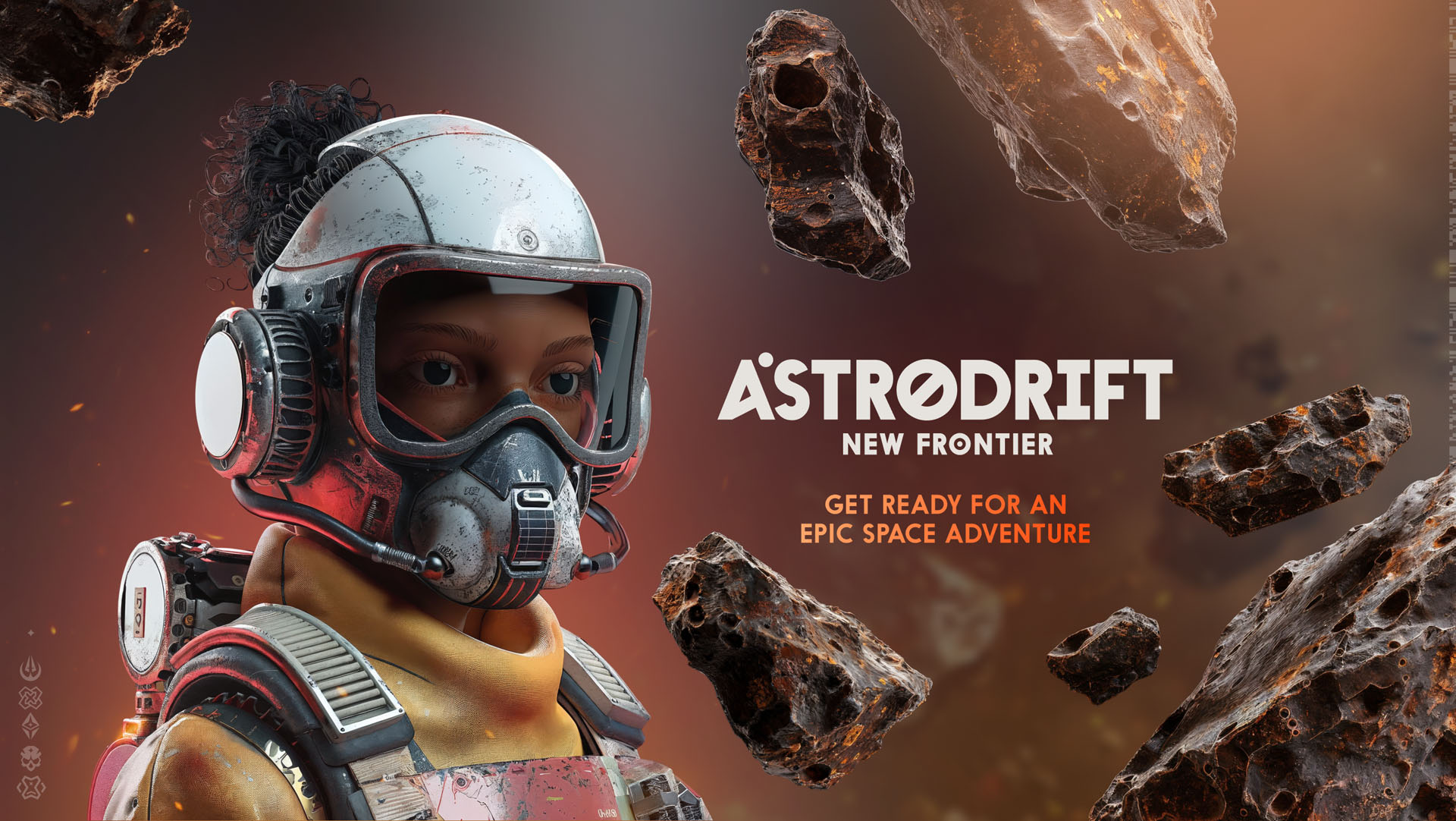Only a few spots left
Claim your Whitelist Spot Today
Secure your place in the Astrodrift universe and join our growing community.
Only a few spots left
Secure your place in the Astrodrift universe and join our growing community.

I’m Chris Stricker, a freelance artist and designer from Frauenfeld. At the moment, I’m totally focused on my digital art project Astrodrift. My creative work is deeply shaped by my experiences with autism and ADHD, which gives me a unique and intense way of seeing the world.
When I’m not creating, I’m a husband and proud dad of two little boys. And since I don’t have much time for video games anymore, I call myself a “retired gamer”. Oh, and a good coffee in the morning? Absolutely essential.

As an artist and designer, I live with a contradiction: on one hand, I love exploring creative freedom and expression in my work, but on the other hand, I rely on structure and routine to feel secure in my everyday life. These two worlds blend together in my art, creating a space where creativity and order work hand in hand. I notice details more intensely and constantly work to balance inspiration and concentration. This tension shapes not only my work but also my daily life.
I received my diagnosis early this year, just before turning 40. I learned that I’m autistic and also have ADHD (without hyperactivity). This discovery has helped me make sense of many of my past experiences and challenges.
There were several factors. The first time I thought I might be on the spectrum was a few years ago after watching the hit TV series The Good Doctor. The show features Dr. Shaun Murphy, an autistic doctor, and it portrays his hypersensitivity to loud noises and visual stimuli. When I saw that, I started to think I might be on the spectrum, too. But what really pushed me was a friend who, after her own ADHD diagnosis, told me that my strong hypersensitivity was a clear sign I could be on the spectrum as well.
I can’t say for sure yet, since it’s all still pretty new to me. After the diagnosis, I felt a mix of emotions: shock, grief, and relief. I’ve spent most of my life feeling like I didn’t quite fit in. The diagnosis confirmed that this feeling wasn’t just in my head.

Anything unfamiliar and everything related to my senses. Loud noises, strong smells, bright lights, and unwanted physical contact all hit me hard. When I’m stressed or haven’t slept well, my ability to handle unfamiliar situations drops significantly.
It often starts with a slow-building inner tension. It feels like my head is getting too full—too many noises and impressions all at once. If I don’t take a break or withdraw in time, the tension turns into stress. Sometimes that makes me irritable or it becomes hard to focus.
Preventatively, I try to stay aware of my body and thoughts so I can find balance before things get too overwhelming. In stressful situations, I usually step away or create some distance. If that’s not possible, I’ll use earplugs to block out noise or focus on calming my thoughts. I might also focus on visual patterns or irregularities in my surroundings to ground myself.
It helps a lot when people understand that everyday tasks, like grocery shopping, take more energy for me. The people close to me know that bright lights and loud noises are hard for me to deal with, and they often take that into consideration.
I never leave the house without earplugs, headphones, sunglasses, or a baseball cap. These tools help me handle daily life more calmly and make me feel more comfortable in stressful environments. They give me a sense of security because they help filter out sensory distractions and protect me. Even if I don’t end up using them, just knowing I have them with me is reassuring. If I forget any of these tools, I feel more anxious.
Art plays a central role in my life. It helps me reduce stress and also acts as a preventive measure. Through creative expression, I can focus better and find a much-needed balance for the challenges I face every day.

I’m about to launch my art project Astrodrift, featuring 1,000 unique digital collectible figures living in a nearby sci-fi universe, searching for rare resources in the asteroid belt. Each figure has its own unique attributes, and one of these attributes, called “Neurodrift,” is designed to raise awareness about the concept of neurodiversity in a fun and engaging way.
Neurodiversity is the idea that there are different ways that our brains work. This includes people with autism or ADHD. It’s about understanding and appreciating these differences as a valuable part of human diversity rather than seeing them as flaws.
Each figure is completely unique, with its own special abilities and characteristics. This makes them exciting not just for digital art fans, but also for sci-fi lovers. The figures are part of a larger universe full of space adventures and stories waiting to be discovered. My vision is to develop among other things a card game or even a video game based on these characters one day. Every figure can be purchased as a digital collectible and is part of a growing universe that’s waiting to be explored.
Openness to the invisible. Just because you can’t always see how autism affects my daily life doesn’t mean there aren’t constant challenges. It would be great if we could treat everyone with the same respect and approach others with understanding, instead of assuming based on our own experiences. I’m working on that myself, too.
These portraits help share individual stories. Every person with autism has different experiences, strengths, and challenges. It’s important that we highlight the diversity within the spectrum. Only then can we break down stereotypes and foster greater understanding in society. It’s about seeing autism not just as a diagnosis or limitation, but as a part of what makes people unique.
Since receiving my late diagnosis, I’ve been actively working to inform others about autism and ADHD. I want to help break down stereotypes so that others don’t have to wait as long to better understand themselves.
Translation of the original article published in German on Autismus Schweiz.